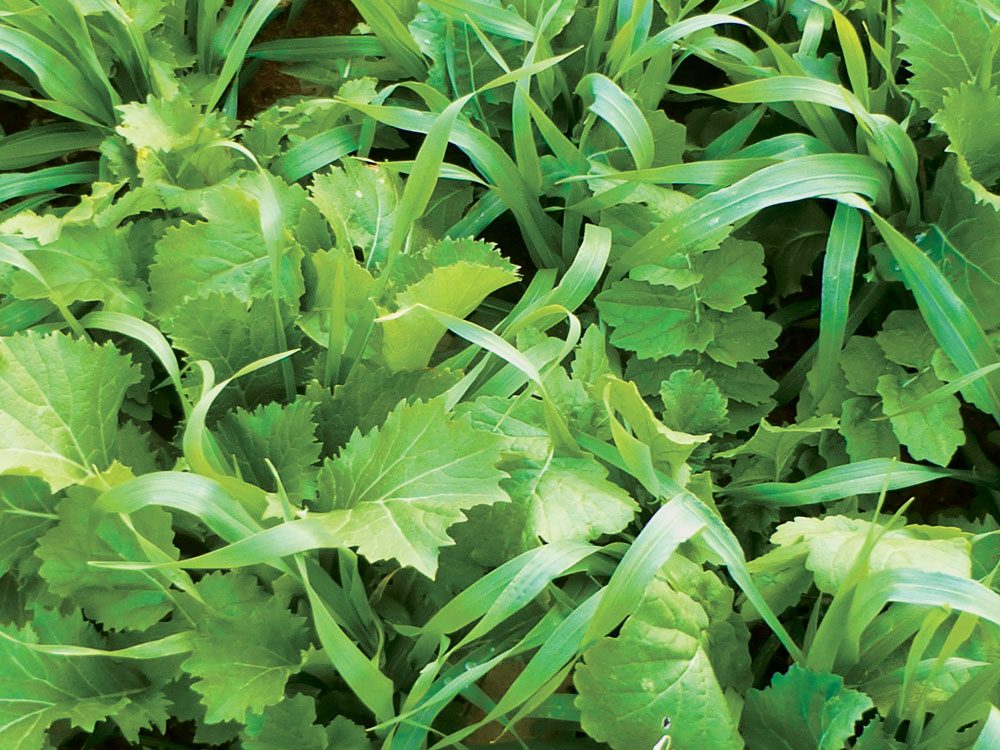1. Termination
“In the past, we have compared early termination to late termination. We determined that termination timing has an effect on nitrogen patterns. However, if you get rain after you spray your residual, it’s going to help work it into the soil. It’s always ideal to time termination with rain. If you can spray the same day or a day or two before the rain, it’s great to help work those chemicals into the ground. But if you’re trying to go organic, you’d want to let your cover get bigger then roll it down at maturity to get the most cover you can.”— Jon Anderson, Frankfort, Ky. from the NNTC classroom session titledTrial Data and Tips That Show How No-Till Tobacco and Transplanted Crops Can Work2. Timing of Planting
“Get your cover crops planted in a timely fashion. If you’re going to use a vertical tillage tool with a Valmar or a Gandy, just be cautious. When we get late in the season and that cover crop has not had time to grow and establish a root system that’s good enough to hold that soil in place, you are vulnerable for some serious erosion on that top 1.5-2 inches. It’s extremely important to be cautious when you’re using a vertical tillage tool late in season. “If we did not get a cover crop planted in a timely fashion in fall before going to corn the next spring, here’s what we’re going to do: We’re going to plant or drill on the 7.5-inch spacing about 200 pounds of peas to the acre this spring, and we’re going to plant corn right into it. That’s going to be the fuel.3. Grazing & Fertilization
“We allowed our cover crops to grow longer, so we’re planting corn green now, which we weren’t doing before. We’re not killing the rye until 3 weeks to a month after the beans are planted, which was in April. So we're not killing it until the end of May or the 1st of June.“We started raising cereal rye, which gave us an opportunity to raise a 15-way mix in the summer as a new practice. We’re building fences so we can get the cattle on every acre as far as grazing opportunities. We’re RTK-ing our manure in the fall with a vertical till applicator, then planting directly into those strips in the spring. Last spring was the first year we did that, and we had really positive results, which are going to allow us to eliminate starter fertilizer and sidedress fertilizer. We’re 100% all on the manure, so we’re not buying any inputs on the nitrogen side.”— Kevin Prevo, Bloomfield, Iowa, from the NNTC classroom speaker panel titledMaking Sense of Carbon Markets: How Science and Technology are Driving Farmer Profitability4. Transplanting in Cover Crops
“We have transplanted in every single cover crop you can imagine. If you want to transplant 1st of May, you need to be prepared to spray in early April or March at times. With a transplant, you’re going 6-8 inches deep, compared to just a few inches deep, and you're moving more dirt.— Jon Anderson, Frankfort, Ky. from the NNTC classroom sessions titledTrial Data and Tips That Show How No-Till Tobacco and Transplanted Crops Can Work5. Maximizing Diverse Cover Crop Mixes
“Go anywhere from 4-16 species of cover crops. That’s one way to get diversity. Mixing annuals and perennials is another way. Too many times when we sit down and build these cocktails, we’re building annuals only. We’ve got to get perennials mixed in with these annuals.“Another way to achieve maximum diversity is to go all the way with cash-crop co-mingling. Try wheat and peas together. Try corn and soybeans together. I have located some 6-foot tall corn, and I’m going to plant corn and soybeans together, and we’re going to harvest them with the grain table. There are synergies there that are going to blow our minds when we figure out how to make this stuff work. Try new things like fava beans and corn. We even had peas, wheat and soybeans. Grow triticale and peas together, and dump in whatever forages you want. Send it to the hammermill, hammermill those peas out, and make a 5% higher protein mix than they ever had before. You need to get creative to find what works.— Rick Clark, Williamsport, Ind., from the NNTC general session titledIf it’s Not Wacky Enough, it May Not Work!To learn more about these cover crop practices, check out this link to all of the presentations from the 2022 National No-Tillage Conference.Related Content:
Tips for Getting Cover Crops to Pay Off from the Starting Gate,
From Green to Brown: Tips for Getting Better Results Terminating Cover Crops, 6 Tips for Making Cover Crops Work with Your Tillage Practices





Post a comment
Report Abusive Comment